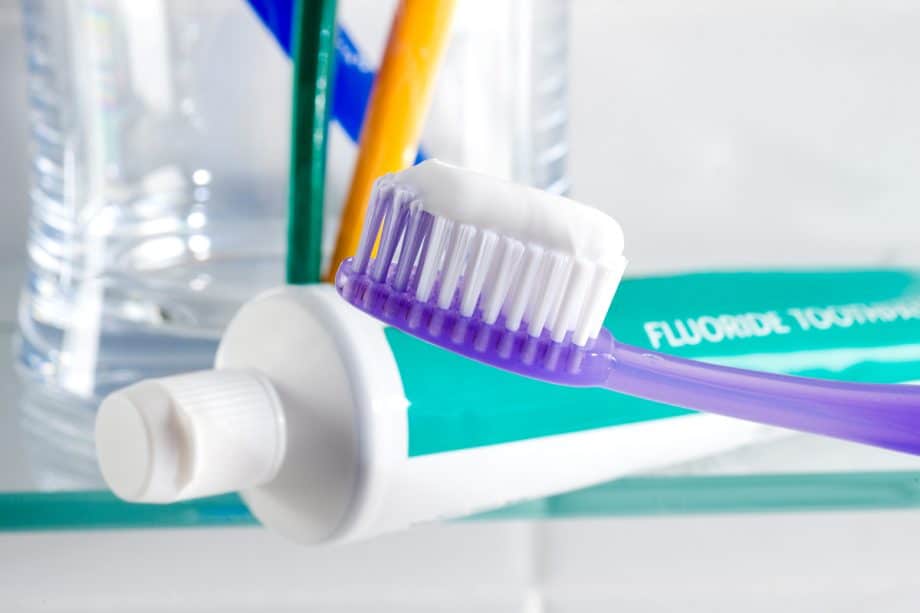As dental professionals, one of the most common questions we hear from parents revolves around their child's oral hygiene routine. Specifically, many parents wonder about the right time to introduce fluoride toothpaste. Navigating the world of children's dental care can feel overwhelming with all the conflicting advice available. We aim to provide precise and reliable information to help you make informed decisions for your child's smile. Establishing good habits early is the foundation for a lifetime of healthy teeth, and understanding fluoride's role is a significant part of that.
We see firsthand how crucial preventative care is for a child's development. Proper oral health affects everything from their ability to eat comfortably to their confidence in social settings. The introduction of fluoride is a significant milestone in this journey. This mineral is nature's cavity fighter, strengthening tooth enamel and making it more resistant to the acid attacks from bacteria and sugars in the mouth. Let's review the current guidelines and best practices, so you can feel confident about when and how to introduce fluoride toothpaste to your child.
The First Tooth and the First Smear
The official recommendations from the American Dental Association (ADA) and the American Academy of Pediatric Dentistry (AAPD) are straightforward: you should start using fluoride toothpaste as soon as your first tooth appears. For many years, the guidance was to wait until a child was older, around two or three years old, but updated research has shown the benefits of starting earlier. This change emphasizes a proactive approach to preventing tooth decay from the very beginning. Even a single baby tooth is susceptible to cavities, which can cause pain and lead to more severe dental problems later on.
When we recommend starting to use fluoride toothpaste, we are referring to a specific amount. For children under the age of three, the recommendation is to use only a "smear" of toothpaste, which is about the size of a single grain of rice. This tiny amount is enough to provide the protective benefits of fluoride without posing a risk if swallowed, as young children are still learning how to spit effectively. You can apply this smear to a soft-bristled, child-sized toothbrush and gently brush your child's teeth twice a day. This early start helps acclimate your child to the routine of brushing and begins protecting their enamel from the start.
Moving to a Pea-Sized Amount
Once your child reaches the age of three, you can increase the amount of fluoride toothpaste to a pea-sized dab. By this age, most children have developed better motor skills and are more capable of spitting out the excess toothpaste after brushing. It is still important to supervise them during brushing to ensure they are not swallowing large amounts of toothpaste and are cleaning all their teeth effectively. We encourage parents to make brushing a fun, shared activity to reinforce its importance.
Supervision is key during these formative years, from ages three to six. You want to ensure your child brushes for a full two minutes, covering all the surfaces of their teeth—front, back, and chewing surfaces. You can use timers, songs, or apps to help make the two minutes fly by. Teaching them to spit thoroughly after brushing is also a crucial skill. Consistently using a pea-sized amount of fluoride toothpaste twice a day provides optimal protection against cavities as more of their primary teeth come in and they begin to eat a wider variety of foods.
Fluoride Safety and Why It Matters
We understand that some parents have concerns about the safety of fluoride, especially for very young children. It's essential to address these worries with facts. Fluoride is a naturally occurring mineral that, when used in appropriate amounts, is one of the most effective and safe tools we have for preventing tooth decay. The reason the recommended amounts are so specific—a smear for toddlers and a pea-size for preschoolers—is to provide maximum benefit while minimizing any risk. The primary concern with ingesting too much fluoride during the years of tooth development is a cosmetic condition called fluorosis, which can cause faint white lines or streaks on the teeth. The careful, supervised use of recommended amounts significantly reduces this risk.
The benefits of fluoride far outweigh the minimal risks associated with it. Tooth decay is the most common chronic disease in childhood, but it is largely preventable. Fluoride works by remineralizing weakened tooth enamel and reversing early signs of tooth decay. For communities without fluoridated water, using fluoride toothpaste is even more critical for oral health. By following the established guidelines, you are taking a powerful and proven step to protect your child’s smile from cavities and set them on a path toward excellent lifelong dental health. Our pediatric dentistry services are centered on the principle of preventive care.
Partnering with Your Dentist for a Healthy Smile
Your child's oral health journey is a partnership between you and your dental team. Regular check-ups allow us to monitor your child’s dental development, professionally clean their teeth, and provide personalized advice tailored to their specific needs. We can demonstrate proper brushing techniques, answer your questions about products, and apply topical fluoride treatments for an extra layer of protection. These visits also help your child establish a positive relationship with the dentist, reducing anxiety and making dental care a routine part of their healthcare. By working together, we can ensure your child's smile stays bright and healthy from their first tooth and for all the years to come.
Frequently Asked Questions About Pediatric Dentistry
What if my child swallows the toothpaste?
For children under three, the recommended "smear" of toothpaste is such a small amount that swallowing it poses no significant risk. For children over three, using a pea-sized amount, it's essential to encourage them to spit out the medicine. If they swallow it occasionally, it's generally not a cause for alarm. However, consistently swallowing toothpaste can lead to an upset stomach or, over time, an increased risk of fluorosis. Always supervise your young child during brushing and store toothpaste out of their reach to prevent them from eating it.
Do baby teeth really need that much care if they're just going to fall out?
Yes, absolutely. Baby teeth, also known as primary teeth, play a crucial role in a child's overall health and development. They help your child chew properly, speak clearly, and hold space in the jaw for permanent teeth to grow in correctly. If a baby tooth is lost prematurely due to decay, it can cause the surrounding teeth to shift, potentially leading to crooked or crowded permanent teeth later on. Cavities in baby teeth can also be painful and lead to infections that can affect the developing permanent teeth below them.
At Oak Road Dentistry, we are committed to delivering comprehensive and compassionate dental care to families in our community. We believe that a healthy smile begins in childhood, and we partner with parents to build a foundation of excellent oral health for their children. If you have any further questions or would like to schedule an appointment for your child, please do not hesitate to contact us.

